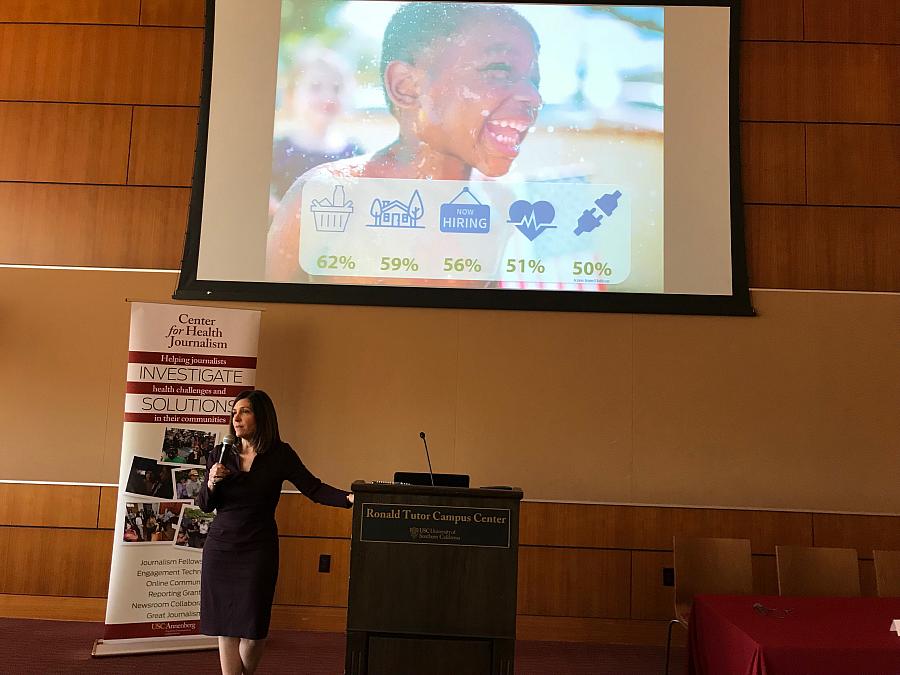This California county is trying to go beyond health care to get at the factors driving health

Anna Roth, director of Contra Costa Health Services, speaks to journalists this week. (Photo by Chinyere Amobi/CHJ)
We now know from research what many doctors and social workers have intuitively known all along: More spending on social services is tied to better health outcomes. But how does a county safety net system go from treating medical problems like asthma and diabetes to tackling the underlying drivers, like a lack of housing, or no electricity at home, or no steady job?
That’s the basic question Contra Costa County has wrestled with in recent years, said Anna Roth, the county’s health director, speaking to fellows this week at the 2018 California Fellowship.
The old way wasn’t working, in Roth’s view. “We did not have great quality outcomes,” she said. “We were still seeing people over-use the emergency department. We were still seeing lots and lots of people not seeing us in primary care.”
Roth has worked in safety net health systems for decades. She thought she knew what patients’ biggest health struggles were. Asthma. Diabetes. Congestive heart failure. But when teams started asking people in waiting rooms what their top heath concerns were, she was surprised by what they learned.
Some 62 percent said a lack of nutritious food was their biggest health issue. Nearly as many said a lack of stable housing, while 56 percent didn’t have stable employment. Half said they didn’t have a steady supply of energy in their homes.
These are the kinds of basic unmet needs that can put doctors in seemingly impossible binds. As Roth put it, “You’re giving them insulin and you know half of them don’t have a refrigerator that will keep insulin cold.”
It was clear to Roth and her colleagues that they needed a new approach that could begin to address these underlying problems that lead to poor health. “We started looking at the data and found the most vulnerable people in the county, and we put this team together to go find and work with them,” Roth said.
Programs and services directed towards inmates in county jail, with the goal of easing re-entry, connecting them with services and lowing recidivism. The program places a big focus on their mental health needs. “Mental health is at epidemic proportions for the incarcerated population,” Roth said.
Dedicated clinics were created to provide wraparound services for the county’s 1,100 foster kids, 60 percent of whom have a psychiatric diagnosis. For the approximately 200 children on psychotropic drugs, a public health nurse is assigned to them to ensure their needs are being met.
For the estimated 6,000 Contra Costa residents without a home, the county formed homeless outreach teams tasked with working with homeless people to connect them with supportive housing and services. And they opened warming centers with service navigators inside.
“So we’re going for the 4,000 highest-risk people in our community,” Roth said. “We have a whole vulnerability algorithm that we use.”
Predictive modeling helps identify who is most at risk of falling into that group next. “Who do we believe will likely believe will move into this high risk category if we don’t intervene?”
According to Roth, the county’s homeless team has done over 2,500 outreach visits in the last year. More broadly, nearly 12,000 residents were connected with some kind of resource, such as food or energy assistance.
“Healthcare delivery proper had to change,” said Roth. “We had to learn how to work with other people.”
**

